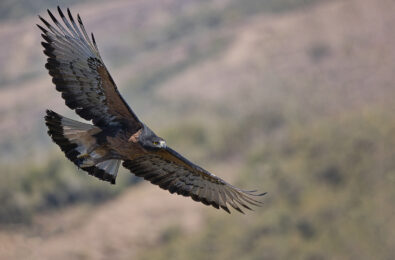Co-design approach to benefit conservation and communities

There is a lot of knowledge and experience accumulated within the FFN Family of winners. Recently Maggie Muurmans and Inza Koné (both 2009 winners) joined forces to develop an inclusive and collaborative method for effectively increasing community engagement and participation in conservation management. Their project has been financially supported by the FFN Family Funding, which promotes collaborations between FFN Award laureates.
Co-designing
While community engagement is recognized as an essential component of nature conservation projects, more work is needed to learn about effective and sustainable community engagement practices. There is a real risk that conservation projects are not well received by local communities as their values and goals are not aligned with the facilitating organisations, or community members can even be excluded (unintentionally) from the process due to a number of reasons.
The business, health and planning sector already use insightful strategies for community engagement that have only sparsely been implemented in the conservation sector. One of these is the collaborative design process, or co-design for short. Co-designing focusses on engaging all stakeholders into the design of a project and bringing together their collective experiences to create suitable outcomes. Co-design process promotes idea generation, open communication and collaboration and works towards collective impact.
Within nature conservation this means that local communities would be involved in the process of conservation project development. Community members would be able to identify conservation issues themselves, their relationship to these challenges and attached opportunities. This would allow more equal contribution from different local stakeholders and create a better balance between socio-economic and biodiversity focussed approaches. Additionally, the co-design method would increase trust within the community as they helped develop the implemented conservation programme.

There is a knowledge gap around co-designing with local communities for conservation purposes, which is why as part of her PhD, Maggie set the goal to explore this community engagement strategy and aim to create a tool-box on generating inclusive and collaborative community participation and engagement. The collaboration between Inza and Maggie allowed to test this in the field in the Ivory Coast. Other locations were Bougainville, PNG and Bone Bolango, Indonesia.
In progress
Maggie has created a link between a survey method called Q-method and an impact mapping exercise for an effective co-design process. Using this method, Inza and Maggie are now working in four local communities situated around Inza’s main work area, Tanoe forest in Cote D’ivoire to determine the consensus in the community around the most pressing issues to address. The Tanoe forest is the largest of the few remaining rainforests in south-eastern Cote D’ivoire and is a top priority area for critically endangered primates in West Africa. The region is under threat from overexploitation of bushmeat and timber and the expansion of human activities has been increasing the pressure to clear the forest. Following the collaboration,Maggie and Inza are able to identify whether current conservation practices have been addressing the issues at the heart of the community or if there are problems that the community has raised which have not been tackled or need to have more focus. Additionally, the whole community Is able to provide continuous feedback of the ideas generated and thus create a feedback loop and strategic learning approach.

As part of the method, three workshop type engagement activities have been organized with local stakeholders, community members, government representatives and NGO’s. The first workshop took place in March 2022. 40 selected participants identified their priority issues in the community which included environmental, social and economic concerns.. They discussed a selection of statements from topics such as health care availability, education opportunities, waste management and environmental protection, and determined the priority each issue has compared to other. To make sure all participants could be equally involved, the statements included an illustration.
Earlier this month, another meeting was held with the participants to explore the issues further and potential community based solutions and activities. Using this input, the next step is to determine tangible actions and create a visual impact map to share with the wider community in Tanoe. Moving forwards, Inza could use this method with other communities’ to monitor their preferences, concerns and ideas about local nature conservation projects and increase their engagement. Additionally, the outcome of this work will be compared to the work Maggie has performed in other countries. Maggie is currently writing her paper on the first part of the work (the Q Method) where publication would, support the development of effective community engagement strategies for conservation.
Stay tuned to read more the outcomes of the project!

















